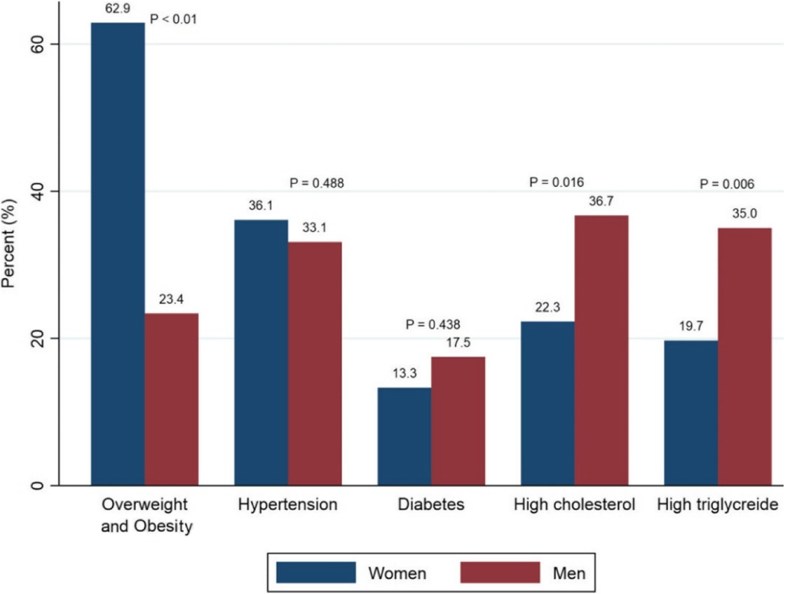
Soheir H. Ahmed, Haakon E. Meyer, Marte K. Kjøllesdal, Niki Marjerrison, Ibrahimu Mdala, Aung Soe Htet, Espen Bjertness and Ahmed A. Madar

Background
Non-communicable diseases (NCDs), particularly cardiovascular diseases, diabetes, respiratory conditions and cancers, are the most common causes of morbidity and mortality globally. Information on the prevalence estimates of NCD risk factors such as smoking, low fruit & vegetable intake, physical inactivity, raised blood pressure, overweight, obesity and abnormal blood lipid are scarce in Somaliland. The aim of this study was to determine the prevalence of these selected risk factors for NCDs among 20–69 year old women and men in Hargeisa, Somaliland.
Methods
A cross-sectional study was conducted in five districts of Hargeisa (Somaliland), using the STEPwise approach to noncommunicable disease risk factor surveillance (STEPS) to collect data on demographic and behavioral characteristics and physical measurements (n = 1100). The STEPS approach is a standardized method for collecting, analysing and disseminating data on NCD risk factor burden. Fasting blood sugar, serum lipids (total cholesterol, low-density lipoprotein (LDL), high-density lipoprotein (HDL), and triglycerides) were collected in half of the participants.
Results
The vast majority of participants had ≤1 serving of fruits daily (97.7%) and ≤ 1 serving of vegetables daily (98.2%). The proportion of participants with low physical activity levels was 78.4%. The overall prevalence of high salt intake was 18.5%. The prevalence of smoking and khat chewing among men was 27 and 37% respectively, and negligible among women. In women, the prevalence of hypertension increased from 15% in the age group 20–34 years to 67% in the age group 50–69 years, the prevalence of overweight and obesity (BMI ≥ 25 kg/m2) from 51 to 73%, and the prevalence of diabetes from 3 to 22%. Similar age-trends were seen in men.
Conclusion
Most of the selected risk factors for noncommunicable diseases were high and increased by age in both women and men. Overweight and obesity and low physical activity needs intervention in women, while hypertension and low fruit and vegetable consumption needs intervention in both men and women. Somaliland health authorities should develop and/or strengthen health services that can help in treating persons with hypertension and hyperlipidaemia, and prevent a future burden of NCDs resulting from a high prevalence of NCD risk factors.
Soheir H. Ahmed, Haakon E. Meyer, Marte K. Kjøllesdal, Niki Marjerrison, Ibrahimu Mdala, Aung Soe Htet, Espen Bjertness and Ahmed A. Madar
Originally published on biomedcentral.com.
more recommended stories
 Kenya’s Unjustifiable Interference in Sudan: A Grave Violation of International Law and Regional Stability
Kenya’s Unjustifiable Interference in Sudan: A Grave Violation of International Law and Regional StabilityBy: Abdi Jama Kenya’s continued meddling.
 The Dire Need for Reunification of the Somaliland People: Addressing theDivisive Impact of the Kulmiye Government
The Dire Need for Reunification of the Somaliland People: Addressing theDivisive Impact of the Kulmiye GovernmentAbstractThe unity and solidarity of Somaliland.
-
Navigating the Impact of Social Media on Youth: Well-being, Academic Performance, and National Development
IntroductionIn today’s digital age, the role.
 Might makes right” : how Ethiopia’s landlockedness is hinderingregional integration
Might makes right” : how Ethiopia’s landlockedness is hinderingregional integrationBy Maal Sareeye The world order.

